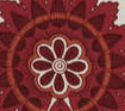


Fashion is moving faster than ever, and so is the technology behind it. One game-changer quietly transforming the industry is digital fabric printing.
Fashion is moving faster than ever, and so is the technology behind it. One game-changer quietly transforming the industry is digital fabric printing. This modern printing technique doesn’t just apply ink—it’s helping designers rethink the way clothes are made, reducing waste, increasing customization, and speeding up production dramatically.
But what exactly is it, and how is it changing the way fashion works? Let’s explore.
At its core, digital fabric printing is a method where designs are printed directly onto fabrics using advanced inkjet technology. Think of it like printing a photo on paper—but instead of paper, you’re printing on cotton, silk, polyester, or blends.
Unlike traditional methods like screen printing or rotary printing, digital printing doesn’t require screens, plates, or long setups. It’s faster, cleaner, more flexible, and perfect for the needs of modern fashion.
Designers can now print whatever they imagine—colorful artwork, fine details, photographic textures—directly onto fabric. Whether it’s a one-off sample or a full roll of material, the design-to-print cycle has become incredibly short.
High-resolution printing (up to 2400 DPI) means even the smallest brush strokes or gradients can be captured beautifully. Traditional methods just can’t match this level of detail without massive cost and time.
Want to print someone’s name, artwork, or photo on a garment? Digital fabric printing makes it easy, giving rise to mass customization—a trend brands are quickly adopting to meet modern consumer demands.
What used to take weeks—creating screens, setting up machines, testing colors—now takes hours. Brands can react to trends almost instantly. In today’s “fast fashion” world, speed is everything.
There’s no need to print 1,000 pieces just to break even. Whether you’re a startup or a big brand testing new styles, you can print just one piece at a time, making digital printing ideal for sampling and short-run production.
Traditional textile printing is one of the world’s biggest water polluters. But digital printing can reduce water usage by up to 90% by avoiding the rinsing, washing, and dyeing stages of old processes.
Digital fabric printers consume less energy overall. Since there are no screens or heavy chemical processes, energy usage drops by as much as 30% compared to traditional printing.
Because you print only what you need, there’s no excess inventory, no dead stock, and minimal leftover dyes or fabrics. Plus, many digital printers now use water-based, non-toxic inks that are safer for both workers and the planet.
Traditional methods become expensive if you only want 50 pieces. But with digital, small batches are totally affordable, helping startups and independent designers bring their ideas to life without huge budgets.
No need to produce in bulk and hope it sells. Print as the orders come in—on demand. This model reduces storage costs and helps brands stay lean and profitable.
Less waste, less inventory, fewer returns, faster turnaround—all these improvements add up to better margins for clothing businesses.
Digital fabric printing is powering a whole new generation of fashion brands:
Print-on-demand stores that customize every order
Small batch fashion labels that release new designs every week
Artists and illustrators creating wearable art collections
Home décor startups printing custom cushions, curtains, and upholstery
In short, digital fabric printing has lowered the entry barrier, allowing more creators to enter the fashion market without traditional manufacturing hurdles.
This 100+ year-old textile factory shifted from mass rotary printing to digitally printing premium designs for top fashion houses—while cutting water use, energy, and waste drastically.
These platforms allow individuals to upload designs and print custom fabric or apparel on demand—no inventory, no wastage, just one click and it’s printed, packed, and shipped.
Famous for blending tech and fashion, she uses digital fabric printing alongside 3D printing and laser cutting to make stunning, futuristic garments.
